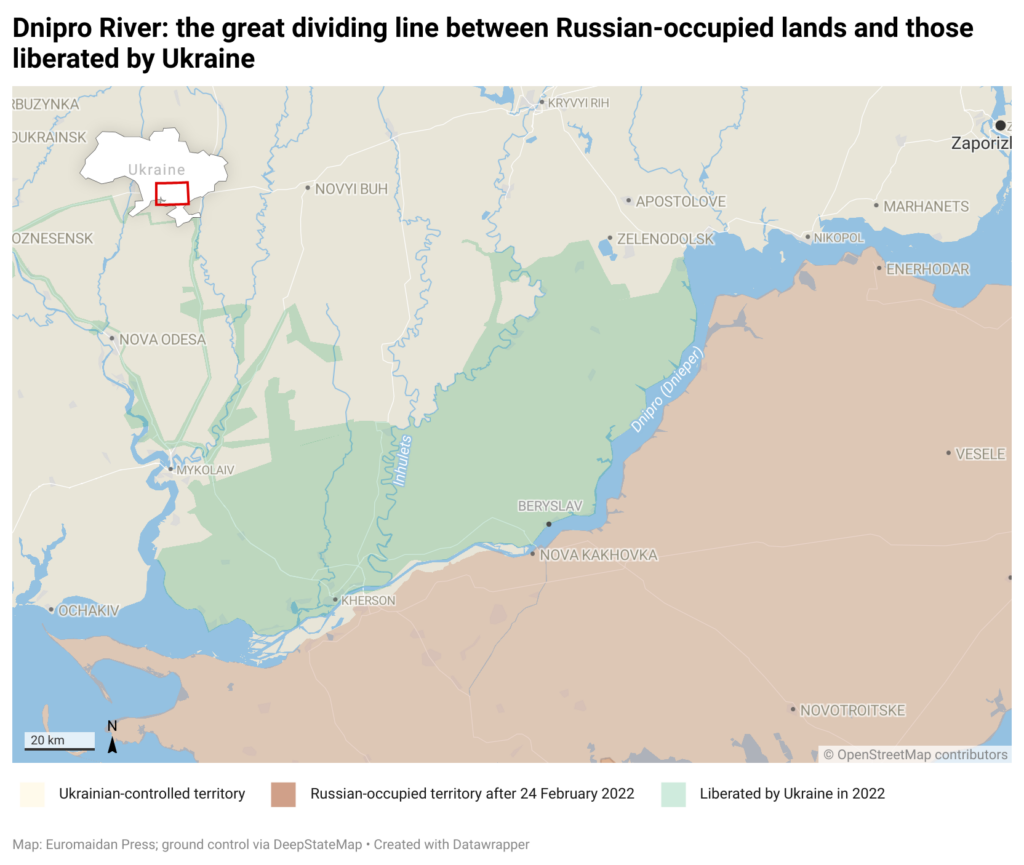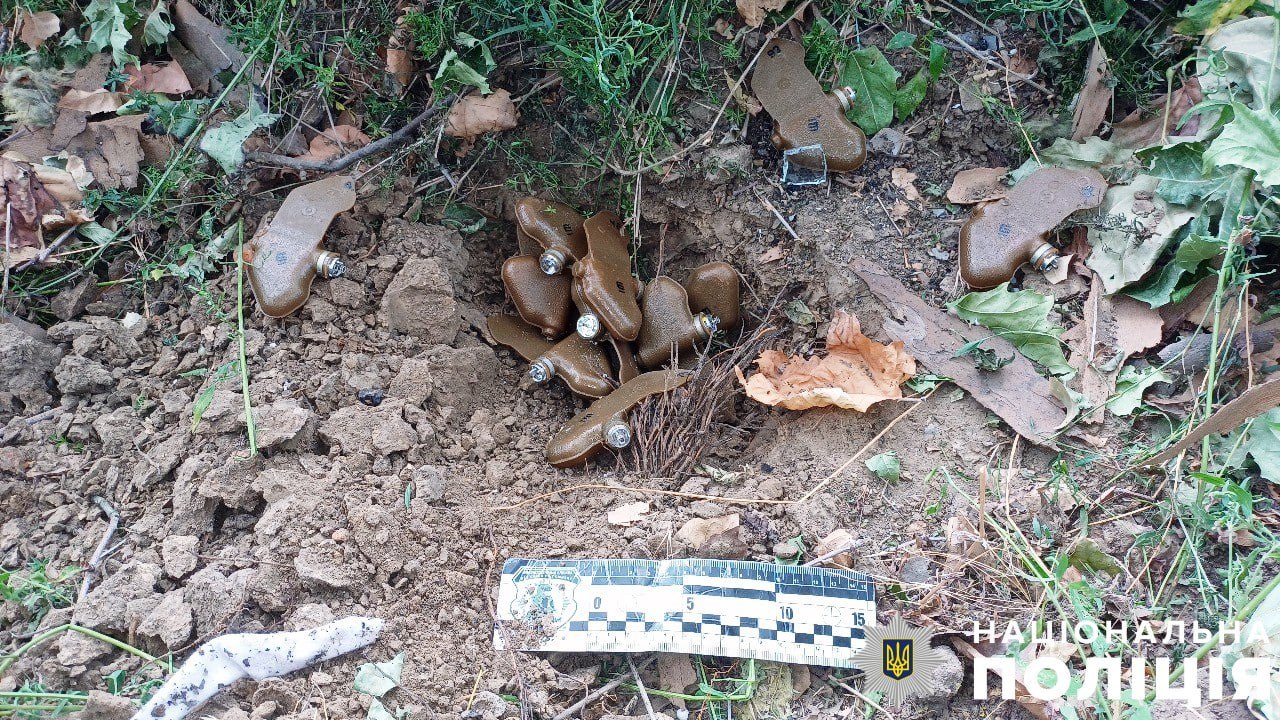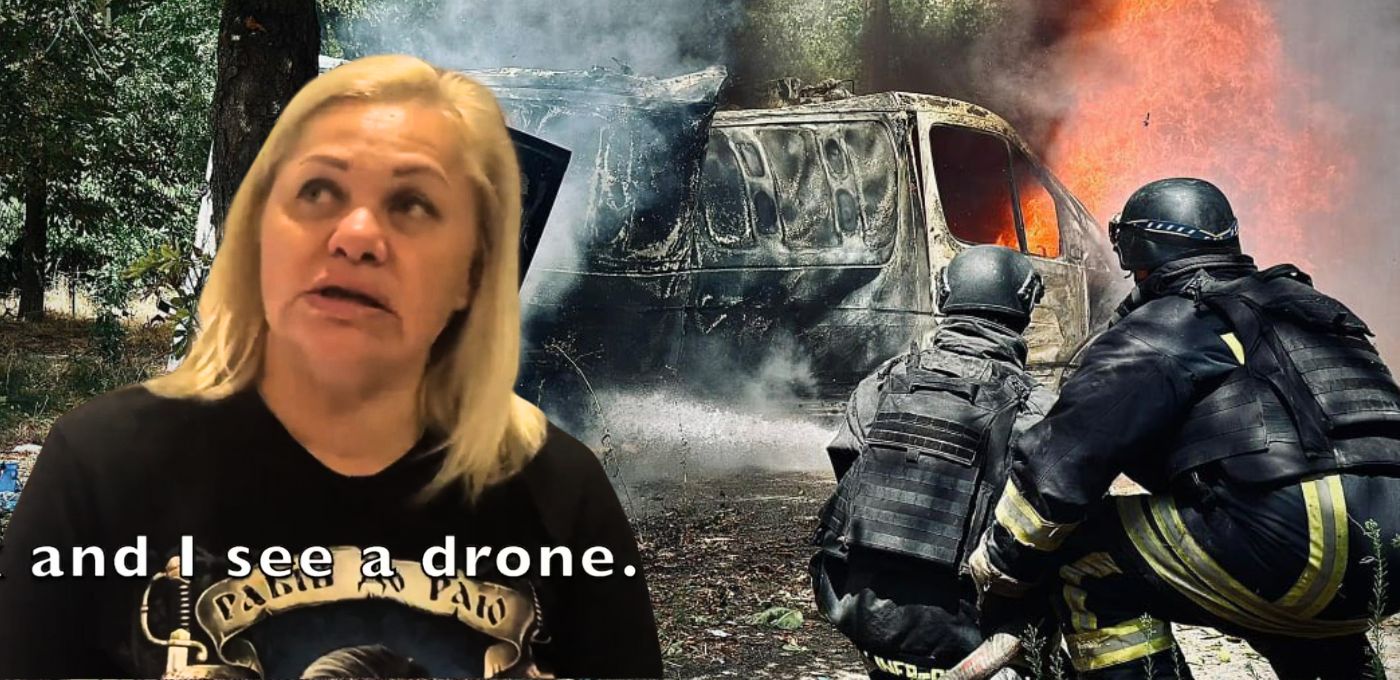The UN confirmed what I saw in Kherson: Russia is hunting civilians for sport

Zarina Zabrisky, Euromaidan Press war correspondent, reflects on daily life under drone fire in Kherson, as the United Nations confirms these attacks were deliberate crimes against humanity.
Russian armed forces have committed murder of civilians as crimes against humanity using drones, concludes the Independent International Commission of Inquiry on Ukraine in a new report just out on 28 May 2025.
This confirms what the people of Kherson knew for months: Russia is targeting civilians from across the river with drones. They are not aiming at military sites. They are hunting people.

Russia’s “human safari” reaches all-time high
By May 2025, the Russian military’s “human safari” is at an all-time high in Kherson, the regional center in the south of Ukraine. Khersonians, keen on defining the horrors befalling them, gave this macabre name to a relatively new Russian tactic: commercially made, small drones hunt and kill civilians.
Mass drone attacks started in Kherson in winter-spring 2024, and intensified by the end of July.
— Zarina Zabrisky

#Kherson BREAKING.
Drones hunt civilians in #Kherson
Spike in #Russian drone attacks.
Dozens injured and killed.
"5-6 attacks a day."
Exclusive interviews from the coastal areas.
An article with an analysis is forthcoming tomorrow.#Ukraine pic.twitter.com/9XllQzrMU9(@ZarinaZabrisky) July 28, 2024
Taking videos and photographs of drone attacks used to be virtually impossible, as such footage might cost a reporter their life or limb. By spring 2025, however, not only is “human safari” a term recognized worldwide, but the attacks are so frequent that the evidence is overwhelming.
These days, aim a camera at the sky—and sooner or later, a drone will show up.
100 drones a day attack Kherson civilians
According to the Kherson military administration, in March 2025, a hundred drones a day attacked the city. In January-April 2025, drone attacks injured 472 civilians, including six children, and killed 51. In April alone, drones injured 109 civilians and killed seven.
For comparison, mines and explosives wounded 215 and killed 22 during the same period in the Kherson Oblast.
UN confirms deliberate war crimes
The UN has now concluded that attacks like this were part of a policy designed to spread terror and confirmed that the practice is recognized as a war crime by international law, as the Russian pilots on the other side of the Dnipro River can see the target and intentionally kill civilians.
“The attacks followed a regular pattern and the same modus operandi, demonstrating that they were planned, directed, and organized. There is no information suggesting that Russian military and civilian authorities have taken any steps to prevent or stop the commission of the crimes,” the researchers conclude.
After months of targeting coastal areas, attacks now focus on the city center and residential areas considered the safest.
Russians master the deadly “double tap”

On May 3, an FPV drone hit a parking lot by the city’s main shopping center, killing one civilian and injuring three. On May 4, more drones attacked downtown, setting civilian vehicles on fire. Meanwhile, artillery and drone assaults on coastal neighborhoods also intensified, said Oleksandr Tolokonnikov, spokesperson for the Kherson Military Administration, in an interview.
“Each week, the Russian military launches guided aerial bomb strikes, followed by artillery shelling—the so-called ‘double tap,'” he said. “Civilian casualties are mounting.”
Due to “double-tap,” a move that Russians have mastered in Chechnya, Syria, and Ukraine, the ambulances cannot pick up the dead.
When first responders arrive at the scene, the Russian military goes for the second strike, injuring the medical staff, firemen, and police.
In April, a drone hit the hospital ER, damaging a hearse with the body of another Russian drone victim, injuring two funeral agency workers.
March 27: when “Armageddon” became daily reality
27 March 2025, is known as “Armageddon”: as the White House proclaimed “energy infrastructure ceasefire,” an unprecedented combined attack hit Kherson, with 37 artillery strikes and dozens of drones killing two and wounding six civilians, and killing several dogs at an animal shelter, in three hours.

“First they shell, then they hunt”: Russia’s savage new civilian terror strategy debuts in Kherson
Later, Armageddon became a daily reality.
First, drones arrive to patrol the skies. Then, a major attack starts either with artillery, shaking the city with a non-stop series of outgoing booms, followed by thin, long whistles, turning into crashing sounds of explosions, or with the aerial guided bomb pulverizing buildings and blocks.
Every five minutes, explosions rock the streets. Shells often hit the power infrastructure, and the electricity goes off.
Life in a city under siege
The city plunges into chaos. Streets and squares remind battle scenes, with cars in flames, power lines torn from the poles blowing in the wind, plumes of black smoke rushing over the sky.
The stench of burned rubber tickles the throat. Drones buzz low and hit public buses and taxis. At the parking lots and sidewalks, drones circle over the injured and dead, crouched in pools of blood.

It is not unusual to discover body parts at the scene. Hiding from the drones becomes easier in summer, with trees providing shelter.
At night, Kherson listens to the louder buzzing sounds of Shahed drones, as well as tanks, mortars, machine guns, and Kalashnikovs fire. Russians are only a few miles away and they try—and fail—to cross the Dnipro River in the dark.
Residents move to the hallways to shelter, but the attacks are so frequent that most only do it if the walls shake and the remaining glass jiggles. Not much glass is left in the windows as it fell out from shock waves and shrapnel pieces. Most windows are covered with plywood.
Walking or driving to a bomb shelter is virtually impossible, as after 9 pm curfew prohibits being outside.
Khersonians stop being outside much earlier. The city is eerily empty, with broken billboards creaking and banging against the walls. Packs of wild dogs roam the streets and are dangerous as they lick blood from the asphalt after the bodies are removed. They attack pedestrians and bicyclists.
In the morning, Armageddon starts all over as FPV drones are flying by the windows, whizzing by, and dropping grenades on any cars driving by.

Russian drones now drop anti-personnel landmines on civilians in Kherson
Even gardeners need bulletproof vests
Kherson City Park crews trimming roses and mowing lawns in the Freedom Square, wearing bulletproof vests, came under attack on the last week of April.
Olga Chupikova, the head of the crew, whose son was recently killed in combat, survived the attack as she was inside.
She said, “It was scary. Three cars burned down. Four colleagues were injured.”
While in April people were still outside planting tomatoes and pumpkins on top of temporary shelters and watering flowerbeds by the ruins, by May, the Kherson military administration recommended staying inside due to the increase in drone attacks.
The challenge of reporting from the frontline
Reporting from Kherson is challenging. A special access is needed, and journalists’ protective gear becomes a bait for the Russian drone pilots.
Working without a bulletproof vest and helmet is a serious risk. In colder weather, a hoodie jacket helps, but as temperatures rise, it becomes difficult. Nevertheless, the coverage of this new reality—and the future of modern warfare—is critically important.

Hi, I’m Zarina, a frontline reporter for Euromaidan Press and the author of this piece. We aim to shed light on some of the world’s most important yet underreported stories. Help us make more articles like this by becoming a Euromaidan Press patron.

